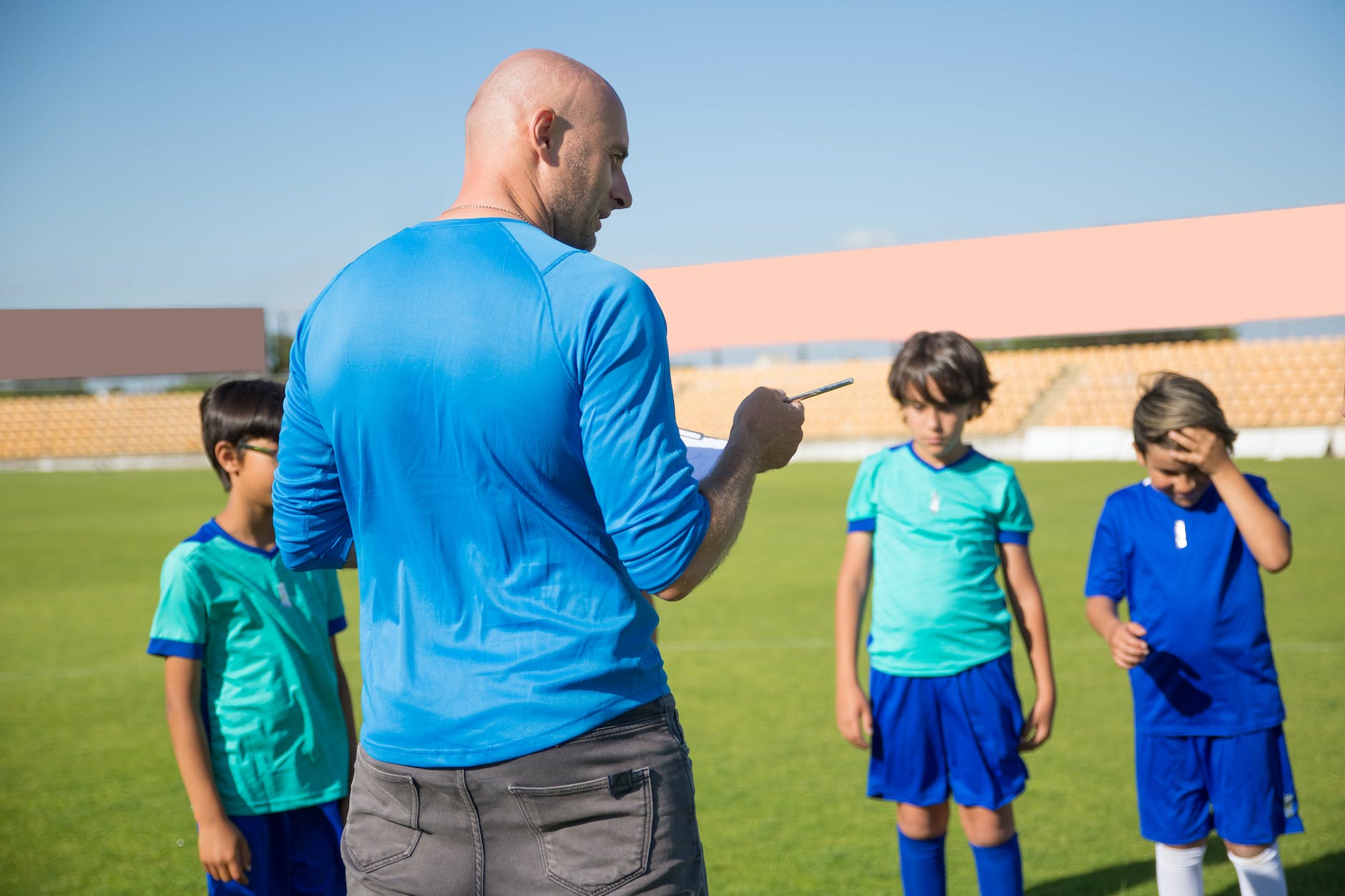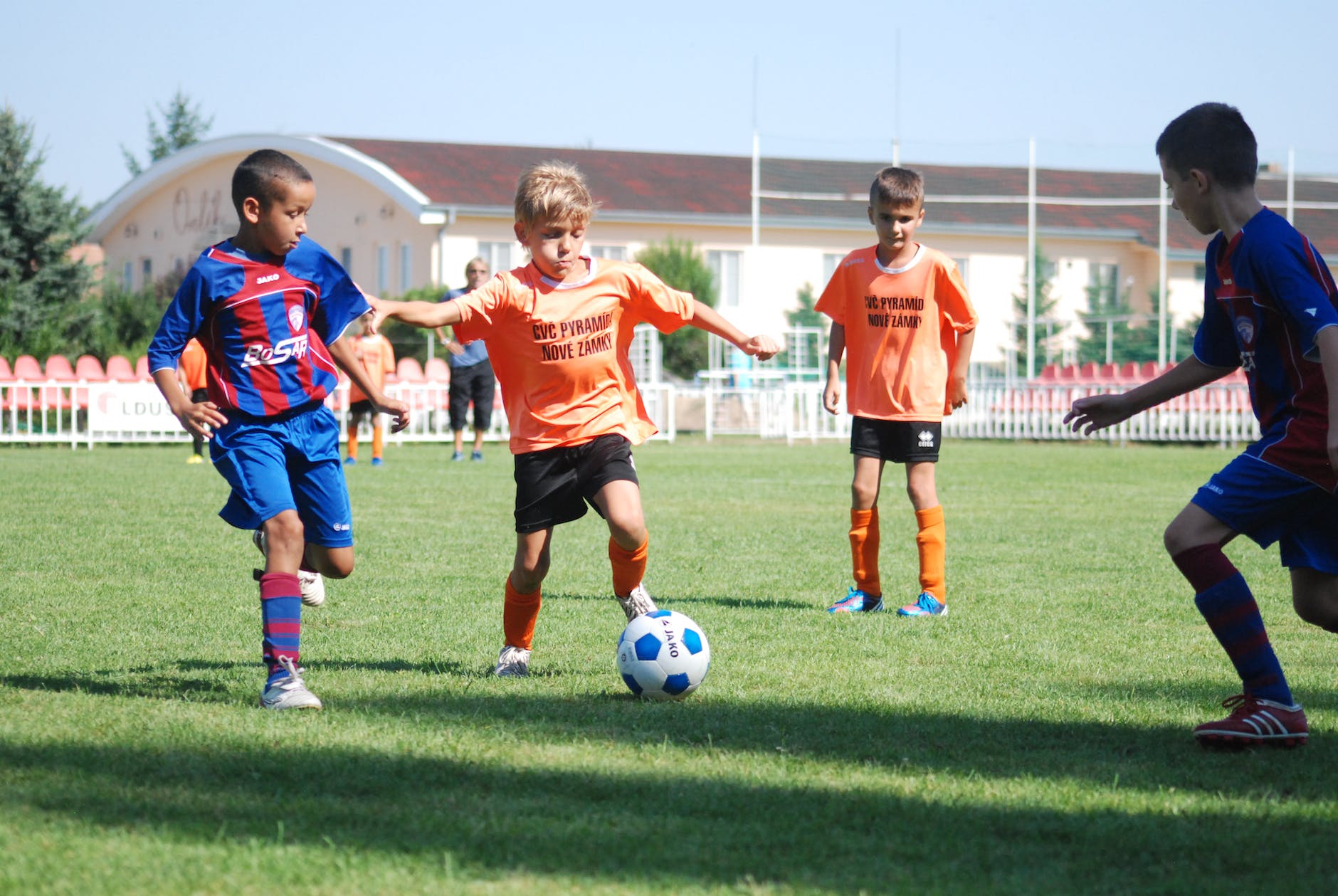Football is a popular sport across the world, the so-called king of sports, and for many young players, it’s the first introduction to organized athleticism. Youth football not only provides an excellent opportunity for children to stay active, but it also teaches valuable lessons about teamwork, discipline, and hard work. For that reason, youth football coaching is responsible to build the foundations of future players but also future fans and people in a well-organized and ethical society.
However, coaching young football players requires a different approach than coaching adults, as their physical and mental abilities are still developing. In this post, I provide a detailed guide to youth football coaching, covering everything from setting foundations and teaching technical and tactical skills to promoting sportsmanship and safety. Whether you’re a volunteer or professional coach or a parent who’s new to the game, this guide will help you create a positive and rewarding experience for your young football players.

Explanation of the Importance of youth football coaching
Youth football coaching is crucial for a number of reasons. First and foremost, it provides, with the help of appropriate youth football training equipment, young athletes with an opportunity to develop their physical skills, such as coordination, speed, agility, strength, endurance, and overall fitness, which are essential for a healthy lifestyle.
Also, youth football teaches important life skills, like teamwork, communication, and leadership, which are critical skills for success both on and off the field. Furthermore, football helps develop discipline, work ethic, and perseverance, which can translate to success in other areas of life, such as academics or future careers.
Perhaps most importantly, youth football provides a safe and structured environment for children to learn and grow. Under the guidance of knowledgeable coaches, young players can develop their skills and build confidence in a supportive and safe environment.
Youth football coaching is essential to develop the different aspects of the physical, mental, and emotional development of young players. It provides them with the opportunity to learn valuable life skills while developing their athletic abilities and can help set the foundation for a successful and fulfilling future.
Setting the Goals
One of the first steps in youth football coaching is identifying and setting goals for the team and each individual player. Setting clear goals can help create a sense of purpose and direction for the season, and can also help players understand what they’re working towards.
When setting goals, it’s important to consider both short-term and long-term objectives. Short-term goals might include winning a particular game, improving a specific skill, or working on team communication. Long-term goals might include winning a championship, developing players’ abilities for the future, or fostering a culture of sportsmanship and teamwork.
It’s also important to consider individual goals for each player. Not every player will have the same strengths or weaknesses, so tailoring goals to individual needs can help each player grow and develop. For example, one player might need to work on his passing skill, while another might need to work on his endurance.
Setting S.M.A.R.T (Specific, Measurable, Achievable, Relevant, and Time-Bound) goals is key, as it helps players see progress and feel motivated. Goals should also be specific and measurable so that players can track their progress over time. By identifying and working towards goals, youth football coaches can help their teams develop both on and off the field.
Design Effective Weekly Microcycles for U13 – U16 Youth Football teams

Unlock the Secrets of Youth Football Training
- Streamline your training sessions with proven weekly microcycles designed for U13-U16 youth football teams.
- Enhance your players’ technical skills, tactical awareness, and decision-making abilities through targeted drills and exercises.
- Optimize physical conditioning with age-appropriate fitness plans that improve speed, endurance, and strength.
- Foster a positive and inclusive team culture, empowering players to grow both on and off the field.
- Ensure injury prevention and promote player safety with expert advice on warm-ups, cooldowns, and recovery strategies.
- Stay up-to-date with the latest coaching methodologies and best practices in youth football.
Training Basic Techniques and Fundamentals
Training basic techniques and fundamentals is essential for young football players. Without a strong foundation of skills, it’s difficult for players to excel and progress to more advanced techniques. Here are some key areas to focus on when training basic techniques and fundamentals:
- Goalkeeping Catching, savings, diving – These are some of the most important skills in football for goalkeepers. Players should focus on the proper way to dive without risking hurting themselves. Catching drills can also help players develop their hand-eye coordination and reaction time.
- Blocking and Tackling – These skills are essential for both offensive and defensive players. Coaches should focus on proper form and technique, emphasizing safety and avoiding unnecessary roughness.
- Coordination, motor skills, and Agility – Football requires a great deal of movement and change of direction, so developing coordination and agility is key. Coordination and agility drills, such as ladder drills and cone drills, can help players improve their footwork and change of direction.
- Passing and receiving – Losing the ball can be a mistake in football that can lead to conceding a goal or a goal-scoring opportunity. Teaching the players the pass-and-receive technique is so important. Over 80% of the attacking actions in a game will be one kind of pass (short or long, with the inside, with the outside etc). Passing to the right foot of your teammate to help him with his receiving and get out of pressure is super important.
- Dribbling – driving with the ball: Dribbling in football refers to the technique of moving the ball with short, controlled taps or touches while maintaining possession of it. Effective dribbling involves a combination of coordination, speed, agility, and good decision-making. Dribbling in a straight or diagonal line without any opponent in front to overcome can be named as driving. Dribbling can also be the effort to pass by the opponent 1 in 1 situation.
- Understanding structures and positioning – Football is a complex game with many different formations and position responsibilities. Coaches should take the time to explain the different formations and positions to their players, helping them understand their roles and responsibilities.
Technique is not being able to juggle a ball 1,000 times. Anyone can do that by practising. Then you can work in the circus. Technique is passing the ball with one touch, with the right speed, at the right foot of your team mate.
Johan Cruyff
By focusing on these basic techniques and fundamentals, coaches can help their players develop a strong foundation of skills that will help them well throughout their football careers. It’s important to remember that these skills require hours of practice and repetition, so coaches should incorporate drills and exercises that allow players to practice these skills regularly.
Position-Specific Training
Position-specific training is a specialized training program designed to improve the skills and performance of football players in specific positions. In youth football coaching this kind of training is designed to the demands and requirements of a particular position, and it aims to develop an athlete’s technical, tactical, physical, and psychological abilities.
For example, a forward may work on improving his finishing skills, while a defender may focus on improving his 1 on 1 marking abilities. Position-specific training can help young players become more effective in their roles, contribute more to their team’s success, and achieve their individual goals.
What to develop with drills and exercises for youth football coaching
Tactical and Tactical Skills
Tactical and technical drills are important parts of youth football coaching. These drills aim to improve players’ tactical awareness, decision-making abilities, and understanding of the game’s strategies. By incorporating tactical drills into the training sessions, coaches can help their young players become more effective on the field and deal with any situation that may occur. Technical drills will help the young players to develop strong technical foundations, which will serve them well throughout their football careers.
To design effective tactical and technical drills for youth football coaching, coaches should follow a few key steps:
- Firstly, coaches need to identify the specific objectives they want to achieve. For example, they may want to improve their players’ passing accuracy or encourage better communication among team members or teach a specific tactical movement like a wide rotation of positions. Once they have identified their objectives, coaches can begin designing drills that focus on these specific skills.
- The second step is to make the drill’s age and skill level appropriate. Youth football players have varying skill, physical and mental abilities, and coaches need to ensure that the drills are challenging enough to push the players to learn and grow, but not so difficult that they become frustrated and disengaged.
- The third step is to keep the drills fun and engaging for the players. Young players learn best when they enjoy what they’re doing, so coaches can incorporate elements of play and competition into their drills to keep the players motivated and interested. And always remember that young players are not mini-senior professional players.
- The fourth step is to provide feedback to the players. Coaches should give constructive feedback to the players before, during, and after the drill, mentioning their strengths and weaknesses, and offering suggestions for improvement. They should also analyze the players’ performance to identify areas of improvement and adjust the drills accordingly.
- Lastly, coaches need to prioritize teamwork in their drills. Football is a team sport, and players need to understand the importance of working together and communicating effectively. Coaches can design drills that encourage collaboration such as small-sided games or passing drills that require players to work together.
In conclusion, tactical and technical drills are essential in youth football coaching. By following these key steps, coaches can design drills that are effective, engaging, and fun for their young players. Through these kinds of drills, young football players can develop their skills, increase their tactical awareness, and learn to work effectively as a team, leading to greater success on the field.

Conditioning and Physical Fitness
Conditioning and physical fitness are critical aspects of youth football coaching. They refer to the physical abilities and endurance of players, including their cardiovascular fitness, strength, agility, and speed. By incorporating conditioning and physical fitness into their coaching plans, coaches can help their young players become stronger, faster, and more resilient on the field.
To design effective conditioning and physical fitness training for youth football coaching, coaches should have in mind some key points. They need to identify the specific physical objectives they want to achieve like endurance, strength, speed, agility, etc. Once they have identified their objectives, coaches can begin designing programs that focus on the specific physical component.

Teaching Sportsmanship and Character Development
Teaching sportsmanship and character development is non-negotiable in youth football coaching. It refers to the development of players’ character, including their respect for others, teamwork, and ethical and leadership skills. It is the coaches responsibility to help their young players become not just better football players, but better people.
- First of all, coaches need to highlight the importance of respect for opponents, referees, and teammates. They should teach players to communicate with dignity and respect, even when the game becomes competitive or heated.
- Another important key element is to encourage teamwork and leadership skills. Coaches can also identify and encourage players who demonstrate leadership potential, helping them to develop their skills and lead their teammates on and off the field.
- The third step is to lead by example. Coaches are role models for their players, and they should model the values they want their players to adopt. Coaches should be respectful, responsible, and ethical, and they should demonstrate sportsmanship and character in their interactions with players, opponents, and officials.
- Finally, players should understand the long-term benefits of sportsmanship and character development. These qualities are not just important on the football field, but in all areas of life that will help them become responsible and respectful adults.
Safety and Injury Prevention
Safety and injury prevention are important elements in youth football coaching. The nature of the sport includes physical contact and duels that puts players at risk of injury, so it is the coach’s responsibility to take proactive measures to keep players safe. Here are some tips for coaches to promote safety and injury prevention in youth football:
- Proper Equipment: Coaches should demand by all players to be properly equipped with shin pads, shoes, and other protective gear. All training equipment should be in good condition, fit properly, and be regularly inspected for any signs of wear and tear.
- Warm-Up and Cool-Down: A proper warm-up and cool-down routine based on the age’s requirements is essential for injury prevention. Coaches should include stretching and other exercises to prepare the body for the physical demands of football and reduce the risk of injury.
- Hydration: Dehydration can increase the risk of cramps and heat exhaustion, so coaches must encourage players to drink plenty of water before, during, and after practice and games.
- Injury Assessment: Coaches must be vigilant in assessing players for injuries and responding appropriately. Players who show signs of injury should be removed from the field immediately and evaluated by a medical professional.
- Rest and Recovery: Players should be given time to rest and recover between practices and games. Coaches should also monitor players’ fatigue levels to ensure they are not overworked.
- Proper Technique: Coaches should teach proper motor skills and techniques to reduce the risk of head, neck, and spinal injuries. They should also encourage players to avoid leading with their heads and to keep their heads up when tackling.
- Rule Enforcement: Coaches must enforce all rules and regulations of the sport, including those related to player safety. Players who engage in dangerous or unsportsmanlike behavior, should be disciplined accordingly.
- Injury prevention routine: Injury prevention exercises before training are essential to reduce the risk of injury during the training These exercises should focus on stretching and warming up the muscles before the workout. This helps to increase blood flow and flexibility, making the muscles less prone to injury. Examples of prevention exercises include jogging or brisk walking, jumping jacks, lunges, and arm circles. The ideal for time efficiency and proper training sessions organization, the players should know the routine and be able to execute it by themselves before the training.

Conclusion: Final thoughts on the importance of youth football coaching.
In conclusion, youth football coaching plays a critical role in developing young players both on and off the field. Coaches must prioritize creating a safe and positive environment for their players, focusing on fundamental skills and techniques, and promoting teamwork and sportsmanship.
Additionally, coaches must keep up with the latest coaching methods and techniques, as well as stay informed about important issues such as player safety and concussion prevention. By doing so, coaches can help instill a lifelong love of the sport in their players, while also fostering important life skills such as leadership, perseverance, and dedication.
Ultimately, the success of youth football coaching is measured not just by wins and losses, but by the positive impact coaches have on the lives of their players.

